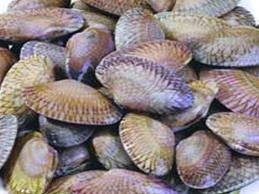| Num |
Date |
Index |
Chg. |
Chg. % |
| 1 |
2015-03-22 |
128.28 |
0.00 |
0.00% |
| 2 |
2015-03-15 |
128.28 |
0.00 |
0.00% |
| 3 |
2015-03-08 |
128.28 |
0.00 |
0.00% |
| 4 |
2015-03-01 |
128.28 |
0.00 |
0.00% |
| 5 |
2015-02-22 |
128.28 |
0.00 |
0.00% |
| 6 |
2015-02-15 |
128.28 |
0.00 |
0.00% |
| 7 |
2015-02-08 |
128.28 |
0.00 |
0.00% |
| 8 |
2015-02-01 |
128.28 |
0.00 |
0.00% |
| 9 |
2015-01-25 |
128.28 |
0.00 |
0.00% |
| 10 |
2015-01-18 |
128.28 |
0.00 |
0.00% |
特徴
 |
| 産地: | Pectinidae inhabit all the oceans of the world, with the largest number of species living in the Indo-Pacific region. Most species live in relatively shallow waters from the low tide line to 100 meters, while others prefer much deeper water. Although some species only live in very narrow environments, most are opportunistic and can live under a wide variety of conditions. Pectinidae can be found living within, upon, or under either rocks, coral, rubble, sea grass, kelp, sand, or mud. Most adult specimens are either byssally attached or cemented to a substrate, while others are free swimmers.
In China, it is distributed the Bohai Sea and the Yellow Sea. Nowadays, large quantities have been bred. 2. Distributed in the South China Sea with low yield. |
| 特徴: | Dried Scallop, also known as Yaozhu(瑶柱), is a type of carbohydrates with rich protein(61.8%), calcium, riboflavin, phosphorus, iron and other nutrients. Its protein content is three times that of chicken, beef and fresh shrimp. Mineral contents are far more than that of edible bird’s nest and shark fin. Scallops are rich in monosodium glutamate so that it’s very tasty. Compared with fresh scallops dried scallops have less fishlike smell. Dried scallops possess medical functions of nourishing brain, kidney and liver, and they can improve immunity, treat dizziness, dispel coldness and strengthen blood recycling. Regular consumption of dried scallops helps to lower blood pressure and cholesterol. According to historical records, dried scallops have the anti-cancer function, and help to soften blood vessels, prevent arteriosclerosis.
The shell of a scallop consists of two sides or valves, a left valve and a right one, divided by a plane of symmetry. The animal normally rests on its right valve, and consequently this valve is often shaped differently than the left (i.e., upper) valve. With the hinge of the two valves oriented as shown in the diagram at right, the left side of the image corresponds to the animal's morphological anterior or front, the right is the posterior or rear, the hinge is the dorsal or back/ top region, and the bottom corresponds to the ventral or (as it were) underside/ belly.[1] However, as many scallop shells are more or less bilaterally symmetrical as well as symmetrical front/back, determining which way a given animal is "facing" requires detailed information about its valves. |
|